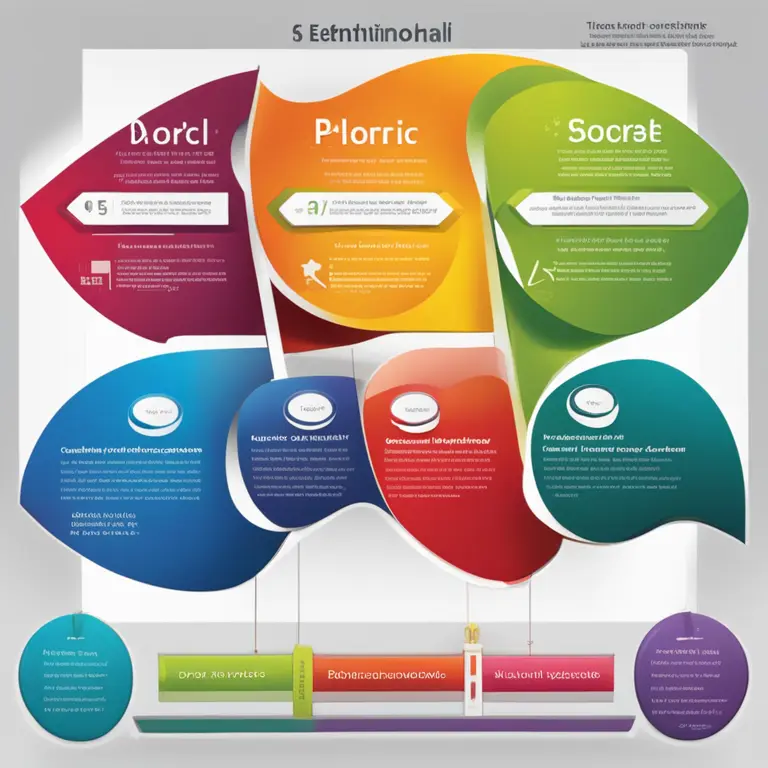
The Essence of Biorhythms: Personal Cycles Decoded
Discover the meaning of biorhythms and how personal cycles can influence daily life, behavior, and well-being in this deep dive into the rhythmic patterns of human biology.
article by Adrian Wallace
Defining Biorhythms
In the study of personal well-being and behavioral prediction, the concept of biorhythms plays a pivotal role. Originating from the Greek words 'bios,' meaning life, and 'rhythmos,' meaning a regular pattern, biorhythms refer to the supposed cyclic patterns through which physiological processes operate. The theory posits that from the moment of birth, humans experience rhythmic biological cycles that affect their capabilities in various domains, including physical, emotional, and intellectual activities. Though the scientific community remains skeptical about its empirical validity, biorhythm theory has found a place in holistic and alternative wellness practices, especially concerning personal planning and health management.

Biorhythmic Cycles and Their Phases
Three primary cycles are widely recognized in biorhythm theory: the 23-day physical, 28-day emotional, and 33-day intellectual cycles. Each of these has a unique ebb and flow, segmented into high and low phases. The high phase, or positive period, signifies a time when individuals are thought to operate at peak efficiency in the corresponding domain. Conversely, the low, or negative period, represents a time of reduced efficiency, where individuals may feel off-balance or less capable. Additionally, a critical day occurs when the cycle crosses the zero line, supposedly marking a phase of greater risk for accidents or errors in judgment due to a transition between the high and low states.

Modern Perceptions and Usage
In modern practice, despite skepticism from certain scientific quarters, biorhythm theory is embraced by many as a tool for personal insight and scheduling. As our lives become increasingly complex, with a greater emphasis on self-optimization and well-being, enthusiasts believe that awareness of one's biorhythms can aid in better decision-making, relationship management, and personal growth. Technological advancements have facilitated this, with apps and software readily available to calculate and track an individual's biorhythms, thus supposed to help in aligning daily activities with their natural rhythms for improved effectiveness.

Integrating Biorhythms in Daily Life
Advocates of biorhythm theory suggest incorporating this knowledge into daily life to enhance overall performance and well-being. This might involve timing challenging physical tasks during a high phase in the physical cycle or engaging in critical thinking or learning during the peak of the intellectual cycle. Emotional awareness can also be heightened by understanding where one stands in the emotional cycle, potentially aiding in communication and emotional regulation. While scientific confirmation remains limited, personal anecdotes abound from individuals who claim significant improvements in their lives after respecting their biorhythmic patterns.

Critical Analysis and Scientific Scrutiny
Academic scrutiny has often dismissed biorhythm theory due to the lack of rigorous, empirical evidence supporting its claims. Critics argue that the theory is too simplistic to encapsulate the complexities of human biology and behavior, which are influenced by myriad factors beyond just cyclic patterns. They point to the placebo effect as a possible explanation for any perceived benefits, arguing that belief in the cyclic predictions may influence behaviors and attitudes more than the cycles themselves. Despite this skepticism, the cultural fascination with biorhythms endures, speaking to the human desire for understanding life's rhythms and seeking harmony within them.
Future Research and Perspectives
Moving forward, the intrigue surrounding biorhythms shows no sign of waning. As interdisciplinary research evolves, there may yet be discoveries that lend some support to elements of the theory. The holistic framework's focus on cyclic life patterns resonates with the broader trends in integrative and personalized medicine. Whether future studies will provide validation or dispel the myths, the dialogue between alternative beliefs and scientific rigor promises to enrich our perspectives on human physiology and the quest for optimal living.
Published: 1/25/2024
Modified: 1/25/2024
More predictions
Come back here soon to learn more about yourself and your future


Your Biorhythm Horoscope Handbook
Discover the intriguing intersection of biorhythms and astrology. Learn how tracking your biological cycles can provide insights into your physical, emotional, and intellectual well-being.


Biorhythm Love Compatibility: Find Your Match
Discover how a biorhythm love compatibility calculator can enhance your romantic connections by analyzing the natural cycles that influence relationships.


The Intersection of Biorhythms & Astrology Explored
Discover the link between biorhythms and astrology to gain insights into your life's patterns and potential.